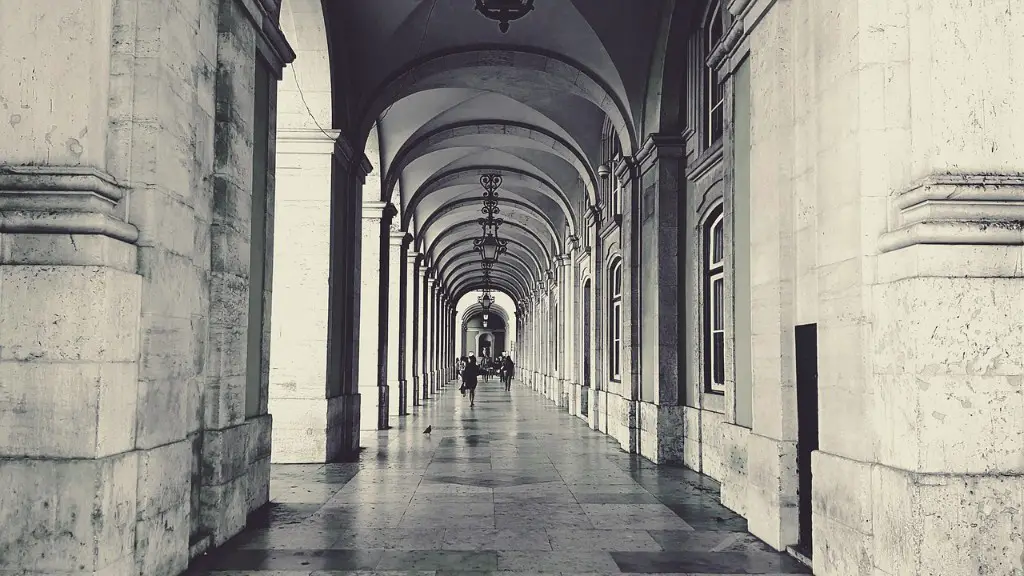To determine which is better between architecture and interior design, there are several factors to consider. It is important to note that both architecture and interior design have unique contributions to the building process, but each profession is also often interconnected. Depending on the scope of the project, the roles of both professions vary.
Architecture is the overall structure and design of a building, framing, electrical and plumbing. It can often help to define the purpose of a space and the limits of the design. Generally, a qualified architect delineates a plan for a building or space that includes detailed measurements and specifications. An architect is also in charge of outside modifications that incorporate visual appeal to a yard or building facade. Additionally, an important part of being an architect entails understanding the practical usage of space, safety regulations and budgeting costs.
Interior design is a very different profession and requires a different set of skills. Whereas architecture involves mostly engineering of the building structure and aesthetics of the exterior, interior design relates to the function and aesthetic of the interiors. Interior designers are able to define the space and create a functional, visually appealing and safe atmosphere for the building. They have strong knowledge in interior space planning, furnishings, options for materials, colours, textures and finishes. Interior designers must also be familiar with building codes and regulations.
When determining which profession is better, the answer depends on the end goal. Architects are largely in charge of the overall design concept, while interior designers put the details and finishing touches. For a building that requires an overhaul and revamp, both professionals are necessary, while other projects may involve one more than the other. Therefore, the answer in regards to which is better is subjective as it depends on the scope of the project.
The Relationship Between Architecture and Interior Design
Architecture and interior design go hand in hand, as the success of one depends largely on the execution of the other. The design and structure of a building must accommodate the interior design, and sketch the space to the scale that interior design needs. Furthermore, interior design heavily relies on the functions an architect includes in the building for it to effectively be developed.
Because of the interconnectedness between the two professional roles, it is not uncommon for an designer to have both qualifications. This can be a great advantage for the project, as both architects and designers can collaborate and easily understand each other’s ideas and needs. This allows them tocreative a cohesiveet vision that is the best combination of both professions.
Who Should I Hire For My Project?
When deciding who to hire for a project, the answer relies mostly on the scope of the work required. If the project involves creating a vaulted ceiling and revamping a kitchen/bathroom, then a qualified architect is needed.But if the scope of the project is changing the furniture, wall art and colour scheme, then interior design is the route to take. Additionally, it is important to consider the collaboration of both professions – if the budget allows for it, then it is best to hire both an architect and an interior design.
Before hiring an individual or a team for a project, it is always best to research their background and credentials. Compare different professionals and study their portfolio, inquire about their design process, and evenask for references from a previous job. This allows you to get a good feel to see if their vision will be similar to yours. A good professional should be able to take on your ideas and vision and create a plan tailored to fit your needs.
Conclusion
To sum up, the professions of architecture and interior design are both necessary when constructing a building or remodelling an existing one. Although both professions contribute in separate ways, they are interconnected with one another to create a complete design solution. When deciding which professional to hire for a project, the answer is subjective, depending on the scope of the work. It is important to research each professional’s background, portfolio and design process to be sure they match the look and feel of the building you envision.
Architectural Design Projects
Architectural design projects are often done with the help of CAD software, and aim to create a structural plan for the building. While doing this, architects will consider the structure of the building, what materials should be used, and the practical and safety regulations that must be followed. Additionally, architects will focus on details such as electricity, plumbing and ventilation systems. Overall, the focus is on creating an aesthetic and practical structure for a space.
A vital part of the architectural design process is research, conducted to gain insights into the project. This ensures the plans and designs meet the expectations and needs of their clients. They should also be aware of modern trends to create a solution that stands the test of time.
Architects need to have a high level of analytical and creative thinking to create a plan. They also need to demonstrate knowledge in mathematics, physics, architecture and design. Other relevant skills include problem solving, budgeting and understanding regulations.
Pros and Cons of Interior Design
Interior design is a creative and important part of the home and building structure. It places importance on controlling the look and feel of a space, by manipulating colours and textures. Additionally, it focuses on the practical usage of space in order to create a pleasant environment.
The advantages of interior design involves creating an aesthetically pleasing environment created through manipulation of colours and textures, as well as catering to the practical use of space. Interior design can also provide mental and emotional support, by creating a space with a calming and uplifting atmosphere.
However, there are some disadvantages to interior design. First, the materials can be expensive and the process can be time consuming. Finding the right combination of furniture and art pieces to fill the space can be a long and tedious process. Additionally, it can be difficult to create a bespoke design to see, because the client may have different ideas than the designer.
What Skills Does An Interior Designer Have?
An interior designer must possess excellent communication skills, since they need to be able to effectively explain the process and their vision to their clients. Furthermore, an interior designer should have a good artistic eye, to help capture the look and feel of the space correctly. Knowledge in colour theory, art history and different elements of design are required, as well as being able to effectively convey ideas.
An interior designer should be adept at problem solving, understanding regulations and completing tasks within a certain timeline. Additionally, they should be familiar with different resources available, like furniture stores and textiles. The designer has to be able to look at a space and effectively identify pitfalls and how to use the space more effectively.
Lastly, an interior designer should have knowledge in budgeting. They should be able to explain the different costs involved with a project and also be able to come up with alternatives if the client’s budget has restrictions.
How Does Interior Design Affect Quality of Life?
Interior design plays an important role in quality of life, as it helps to create an environment that is both calming and stress-free. It should complement the lifestyle of its occupants, so that their living space is a reflection of who they are. Additionally, interior design should be tailored to their specific needs – from young children to the elderly, everyone has different requirements for a comfortable home.
The colours and textures selected should be tailored to the occupants, to create a feeling of comfort. In addition to this, furniture should be chosen carefully, as an ergonomic chair with lumbar support can help prevent lower back aches. Furthermore, lighting can be tailored to specific tasks, such as a reading lamp to help while studying or revision.
Interior design can also help to create mental and emotional support. Through the selection of colours, shapes and textures, a more uplifting atmosphere can be created. Artwork, furniture and accessories should be chosen to reflect the personality of its occupants, adding an extra personal touch to the living space.
What Are The Benefits of Working With an Architect?
Working with an architect can be beneficial in terms of a successful design project. Firstly, an architect is responsible for creating the plan for the building’s structure, which is the foundation for interior design. They will be able to provide advice on the practical use of space, routing electrical wiring and incorporating safe barriers for outdoor living.
Architects are also in charge of choosing the right materials for the job and analysing the structural stability of a building. They can also provide insight and advice on maintaining a building, as well as advice on how to make the most of the available space. An architect also has a great understanding of building codes and safety regulations, which ensures that the building follows the necessary laws before its completion.
In conclusion, an architect is essential in the building process, as they provide the knowledge and experience required to make an effective plan. They can provide project management, budget analysis, and compliance with safety regulations. They are also able to provide their expertise and understanding to the rest of the team to ensure the best outcome for the project.





